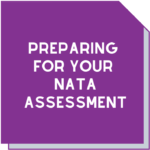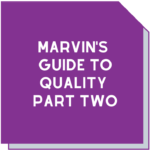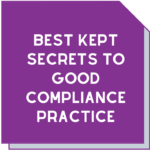More tips for remote assessments
 It’s been a few months since our last article about carrying out remote assessments.
It’s been a few months since our last article about carrying out remote assessments.
Although everyone has improved with experience, there are still new things we’re discovering.
During a recent webinar with our friends at the RACI Pharmaceutical Science Group, we picked up these tips and wanted to share them with you. And if you have a NATA accreditation visit coming up, you’ll find these very useful!
Criticality of the activity
Not everyone’s facility is suitable for remote assessments.
Determine the criticality of the activity and whether it is high, medium or low risk. For example, a facility producing sterile products could be high risk. Also consider the compliance level of the facility.
If a facility producing sterile products has a low compliance history, it would require an onsite component to their assessment. On the other hand, a complementary medicine facility with a high compliance level would likely be suitable for a completely remote assessment.
Who’s in the room?
In the same way you’d introduce yourself and your team at a face-to-face activity, make introductions at the beginning of the assessment.
Be sure that everyone participating in the assessment can be seen and heard clearly. Consider having key staff members such as your lab manager and quality manager log in separately, even if they’re in the same office. But if you’re all in the same room with separate computers or devices, be sure to mute all except one of the computers/devices so you don’t get feedback. This will also assist with everyone being able to see and share material onscreen.
As a matter of courtesy and transparency, if you have other team members observing who do not need to be on screen (for example, while an assessor or staff member is being trained or mentored), mention this at the beginning of the assessment.
Which app can you use?
Some organisations are very strict about which app they will allow staff to use.
Microsoft Teams and Webex are preferred for meetings and document sharing as they are perceived as being more secure. Zoom is extremely popular and their security settings have been upgraded recently. However, there is still the perception among some companies that this is not the best option.
Confirm the platform well in advance. Ensure that everyone has the app downloaded onto the relevant devices and is familiar with its operation.
 Flexibility is fundamental
Flexibility is fundamental
Despite being in lockdown and working from home for what seems like forever, there are still many organisations and individuals for whom this is not a comfortable way of doing business.
Consider this when working out how the assessment should be undertaken to ensure that it is as stress free as possible.
Be flexible in the way you use the technology that’s available and ask for the organisation’s suggestions – they could come up with a solution you hadn’t considered.
Give them the option to email documents or share online in the app. The person carrying out the document review could take a short break to do this, then come back online to ask any questions.
If a process needs reviewing, a live video using someone’s phone could be an option. Try using a series of photos or a pre-recorded video, ensuring date and time stamps are clearly visible.
Videos should be no longer than four minutes in length to ensure they’re not too large to upload. Using Chrome to do this is usually more efficient. Mute the video and add a voice over afterwards so that background noise isn’t a distraction.
Be creative. If you need to view a document during the assessment, try mounting a camera on a tripod. Angling it downward will allow you to view document pages and is an excellent alternative to scanning and sending. It’s also very useful for extensive documents which could be onerous to scan, and for records such as log books.
Be realistic about time
When you’re going into a face-to-face assessment, you’re usually pretty clear on how long it will take. However, when carrying out remote assessments, this is often underestimated.
Looking at a screen for long periods of time, trying to focus on different activities and people, possibly on different screens or at different sites, can add up to fatigue and stress very quickly.
It may be best to have the assessment run over more days but with shorter hours each day. Communicate with the organisation that’s being assessed and determine the most effective way to get the best result out of the assessment.
Test, test, test
No matter what platform you use, it’s vital to carry out trials with everyone’s device that they will be using on the day. Make sure they’re comfortable and confident with logging in, uploading and downloading of documents.
There also needs to be a back-up device in case something goes wrong on assessment day with the correct app is already downloaded.
If you have IT support, make sure they’re available during the trial and the assessment. It’s preferable to have the same person for both activities.
Bandwidth can be an issue in some areas of the country but also in some areas of the facility being assessed. If you know your Wi-Fi doesn’t cover your facility, consider using a Wi-Fi extender and test how this works beforehand.
What’s in a name
When uploading documents for review, ensure that the file structure and naming protocols are clear and that the documents are in a logical sequence. Wading through a series of files called ‘Assessment Document’ and a number is both frustrating and time consuming.
 Distractions
Distractions
We’ve probably all been in meetings when children or animals have made an unexpected appearance. While this can be briefly amusing, it does disrupt the flow, particularly during an assessment.
Assessors who are working from home should keep the background distractions to a minimum. This could include changing your video screen view or investing in a backdrop.
Audio distractions should also be minimised. You may need to mute yourself when someone is speaking and remember to unmute when it’s your turn to speak. “You’re still muted” is one of the year’s catchphrases!
Be mindful about muting – you may not want everyone to hear absolutely everything that’s happening. This goes for both the assessment team and the facility being assessed.
A speaker can be useful if there are a few people in a room who need to hear what’s happening. However, this can lead to echo and a lack of clarity when people are speaking – another reason to practice before the assessment day.
Stay safe
Every organisation has requirements for staying safe during Covid. In addition, consider mandatory requirements laid down by State and Federal Governments.
For this reason, assessors may not be able to see everything they would like to. You may not be able to carry out video activities in a clean room or in an area which contains equipment that’s highly flammable.
The assessment team needs to be aware and respectful of those requirements and conditions. The organisation being assessed will do their best but should not feel as though they are required to compromise any of these conditions.
What if I need help?
That’s what we’re here for! Email info@masmanagementsystems.com.au or phone Maree on 0411 540 709 for confidential support and advice.
Remember, you don’t have to do this alone!
Download this article More remote assessment tips


 Flexibility is fundamental
Flexibility is fundamental Distractions
Distractions



